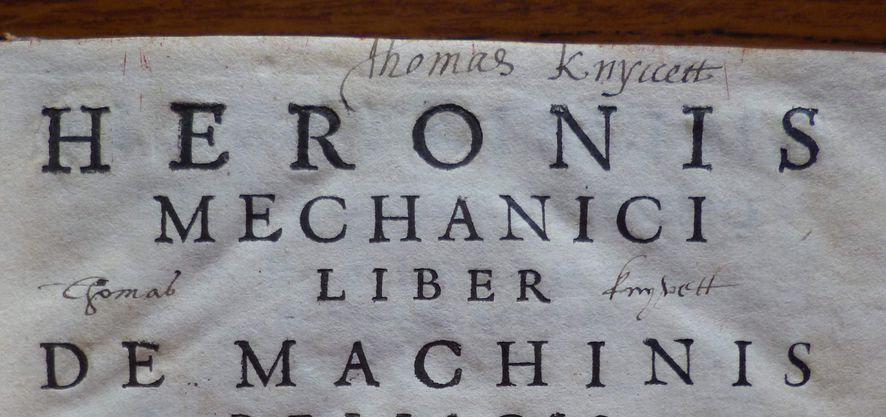Difference between revisions of "Thomas Knyvett ca.1539-1618"
m (Text replacement - "personal Title" to "personal title") |
|||
| Line 1: | Line 1: | ||
__NOTITLE__ | __NOTITLE__ | ||
| − | ===[[personal | + | ===[[personal title::Sir]] [[name::Thomas]] [[name::KNYVETT]] ca.[[date of birth::1539]]-[[date of death::1618]]=== |
====Biographical Note==== | ====Biographical Note==== | ||
Revision as of 01:05, 11 June 2020
Sir Thomas KNYVETT ca.1539-1618
Biographical Note
Born at Ashwellthorpe, Norfolk, the estate he inherited in 1562 and where he spent most of his life; son of John Knyvett, a member of a wealthy family of Norfolk gentry with connections in aristocratic and court circles, and property in a number of counties. Entered the Middle Temple 1562. High Sheriff of Norfolk, 1579, Deputy Lieutenant for Norfolk 1585-88.
Books
Acquired books throughout his life, both new and secondhand, and accumulated a library of ca.1400 printed books and 70 manuscripts which was valued at £700 when he died. Surviving correspondence with his brother Henry includes references to Henry’s obtaining books for Thomas in London. He was also an enthusiastic collector of coins and medals. Acquired books from the collection of Edward Flowerdew (d.1586), a Norfolk MP, and from other local sources. A catalogue of the library made just after his death contains 1370 entries, with 75% of the books in Latin, 9% in English and the remainder in various European languages, mainly French, Italian and Spanish. The collection was wide-ranging in content, covering classics, theology, history, mathematics, astronomy, numismatics, geography, medicine, botany and other subjects. The printed books mostly date from the middle decades of the 16th century"16th century" contains a sequence that could not be interpreted against an available match matrix for date components.. The manuscripts came from a variety of medieval monastic sources.
Knyvett bequeathed his library, with the rest of his estate, to his grandson Thomas (d.1658), from whom it passed to his son Sir John (d.1673), and his son Thomas (d.1693). The collection remained largely intact and little added to during this time. It was dispersed shortly after 1693 with many books acquired by John Moore (q.v.), and thence transferred to Cambridge University Library – over 360 books and 57 manuscripts are now there.
Characteristic Markings
Typically inscribed his name on titlepages in two forms, in italic hand at the head and in secretary hand further down the page. Commonly wrote the price or date of acquisition on the titlepage, and used a number of mottoes. Sometimes added notes on the titlepage or at the end when he had read a book. Examples: many in Cambridge UL; BL 1360.i.14; Bodleian Library H.5.11.Art.
Sources
- McKitterick, D. The library of Sir Thomas Knyvett of Ashwellthorpe, 1978.
- Reid, P. Proto-bibliophiles amongst the English aristocracy, 1500-1700, Library History 18 (2002) 25-38.
